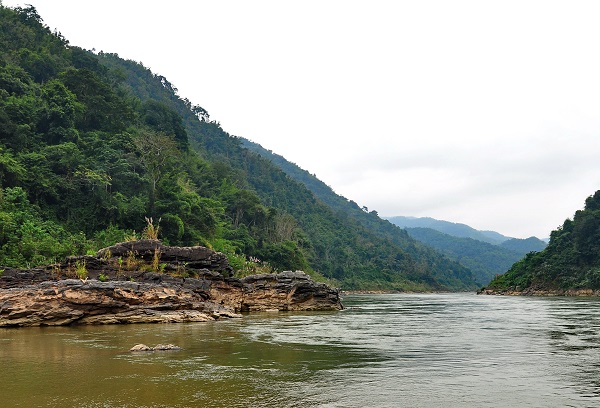The Lancang River is known internationally as a rich water resource with diverse aquatic ecology, but research on riparian plant biodiversity is sparse. As a tropical transition area in the Mekong Basin, Xishuangbanna in southwest China is ideal for in-depth studies into the role of rivers on biodiversity patterns and for predicting climate change impacts on regional plant biodiversity.
In a study published in Science of the Total Environment, researchers from Xishuangbanna Tropical Botanical Garden (XTBG) investigated the importance of riparian areas for biodiversity conservation management, by identifying climatic refugia for threatened woody plant species.
By using an ensemble of small models, the researchers predicted the current and future (2050s and 2070s) potential distribution of 50 threatened woody species in Xishuangbanna and then stacked the predictions for individual species to derive spatial biodiversity patterns within each 10×10 km grid cell. Afterwards, they identified the top 17% of the areas for spatial biodiversity patterns as biodiversity hotspots and defined climatic refugia as areas that remained as biodiversity hotspots over time.
The researchers then applied stepwise regression and linear correlation to analyze the environmental correlations with spatial biodiversity patterns and the relationships between climatic refugia and river distribution, respectively.
The results showed that threatened species in the tropics transition shift towards upslope and boreal regions, which confirmed that climate warming drives species to higher elevations and/or latitudes. The spatial biodiversity patterns shift from southeast to northwest, and were influenced by temperature, precipitation, and elevation heterogeneity
The results further confirmed that the Lancang River valleys act as refugia, maintaining long-term species persistence by sustaining regional moisture availability and buffering climate change impacts on biodiversity. The species richness of forests that border water bodies (i.e. riparian forests) is higher than that in other upslope forests.
“This study suggests that the establishment of a riparian buffer is an effective priority conservation strategy for the plant biodiversity in riparian areas. It’s thus important to protect riparian areas from threats posed by the expansion of rubber plantations in Xishuangbanna,’ said LI Jie of XTBG.
Contact
LI Jie Ph.D Principal Investigator
Center for Integrative Conservation, Xishuangbanna Tropical Botanical Garden, Chinese Academy of Sciences, Menglun, Mengla, Yunnan 666303, China
E-mail: jieli@xtbg.ac.cn

Riparian forest along Lancang River in Xishuangbanna (Image by HUANG Jian)

